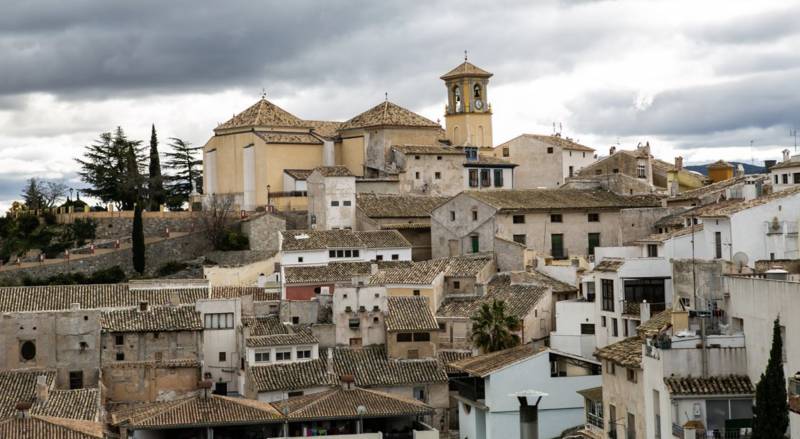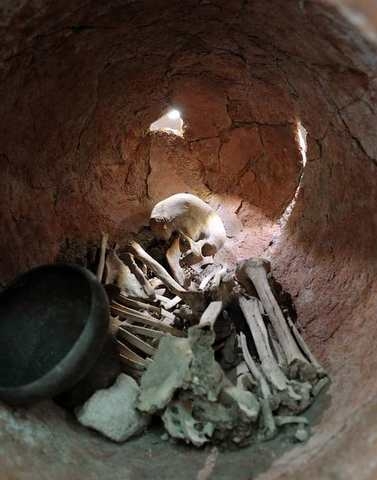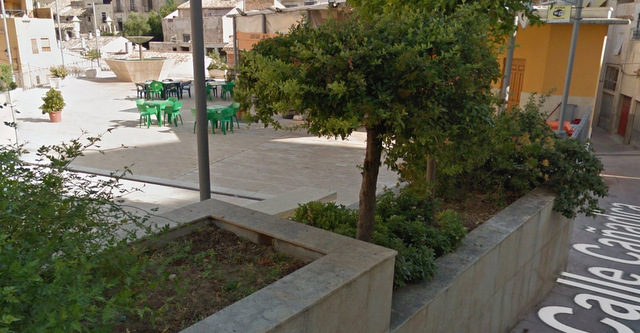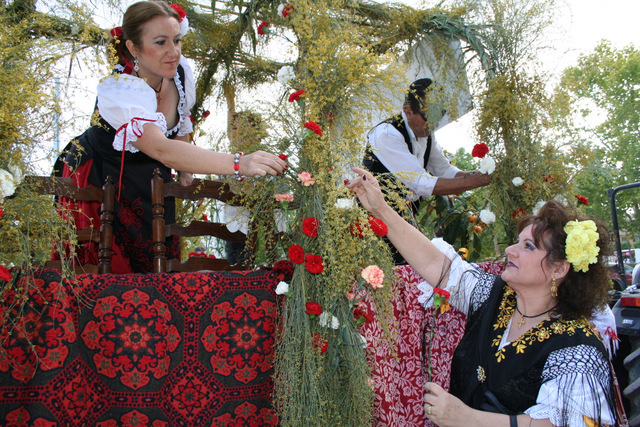- Region
- Águilas
- Alhama de Murcia
- Jumilla
- Lorca
- Los Alcázares
- Mazarrón
- San Javier
-
ALL AREAS & TOWNS
- AREAS
- SOUTH WEST
- MAR MENOR
- MURCIA CITY & CENTRAL
- NORTH & NORTH WEST
- TOWNS
- Abanilla
- Abarán
- Aguilas
- Alamillo
- Alcantarilla
- Aledo
- Alhama de Murcia
- Archena
- Balsicas
- Blanca
- Bolnuevo
- Bullas
- Cañadas del Romero
- Cabo de Palos
- Calasparra
- Camping Bolnuevo
- Campo De Ricote
- Camposol
- Canada De La Lena
- Caravaca de la Cruz
- Cartagena
- Cehegin
- Ceuti
- Cieza
- Condado de Alhama
- Corvera
- Costa Cálida
- Cuevas De Almanzora
- Cuevas de Reyllo
- El Carmoli
- El Mojon
- El Molino (Puerto Lumbreras)
- El Pareton / Cantareros
- El Raso
- El Valle Golf Resort
- Fortuna
- Fuente Alamo
- Hacienda del Alamo Golf Resort
- Hacienda Riquelme Golf Resort
- Isla Plana
- Islas Menores & Mar de Cristal
- Jumilla
- La Azohia
- La Charca
- La Manga Club
- La Manga del Mar Menor
- La Pinilla
- La Puebla
- La Torre
- La Torre Golf Resort
- La Unión
- Las Palas
- Las Ramblas
- Las Ramblas Golf
- Las Torres de Cotillas
- Leiva
- Librilla
- Lo Pagan
- Lo Santiago
- Lorca
- Lorquí
- Los Alcázares
- Los Balcones
- Los Belones
- Los Canovas
- Los Nietos
- Los Perez (Tallante)
- Los Urrutias
- Los Ventorrillos
- Mar De Cristal
- Mar Menor
- Mar Menor Golf Resort
- Mazarrón
- Mazarrón Country Club
- Molina de Segura
- Moratalla
- Mula
- Murcia City
- Murcia Property
- Pareton
- Peraleja Golf Resort
- Perin
- Pilar de la Horadada
- Pinar de Campoverde
- Pinoso
- Playa Honda
- Playa Honda / Playa Paraíso
- Pliego
- Portmán
- Pozo Estrecho
- Puerto de Mazarrón
- Puerto Lumbreras
- Puntas De Calnegre
- Region of Murcia
- Ricote
- Roda Golf Resort
- Roldan
- Roldan and Lo Ferro
- San Javier
- San Pedro del Pinatar
- Santiago de la Ribera
- Sierra Espuña
- Sucina
- Tallante
- Terrazas de la Torre Golf Resort
- Torre Pacheco
- Totana
- What's On Weekly Bulletin
- Yecla


- EDITIONS:
 Spanish News Today
Spanish News Today
 Alicante Today
Alicante Today
 Andalucia Today
Andalucia Today
article_detail
Santuario De La Santísima Virgen De Las Maravillas, Cehegin
Also known as the Convent of San Esteban, el Convento de San Esteban, Cehegín.
 Construction work began on this group of buildings in the 16th century, the new building formed around a primitive hermitage dedicated to San Esteban, a dedication which has continued to the present day. The new church was built under the patronage of D. Alonso Fernández Peñalver and work began in 1568, the new building named the “Convento de San Esteban Protomartir Extramuros”.
Construction work began on this group of buildings in the 16th century, the new building formed around a primitive hermitage dedicated to San Esteban, a dedication which has continued to the present day. The new church was built under the patronage of D. Alonso Fernández Peñalver and work began in 1568, the new building named the “Convento de San Esteban Protomartir Extramuros”.
Since its construction it has been occupied by the Franciscan order, except from 1836 to 1878, when it became a lay building, and in the time of the Second Republic (1930s), when it briefly became a women’s prison.
In 1690 a missionary school was founded in the convent with the aim of training missionaries who would be sent to America, the school attracting pupils from Valencia and Granada, bringing important revenue to the convent
Since the 16th century, when a small chapel dedicated to San Esteban was built, there have been various alterations, the most important of which took place in the 18th century, when the church was considerably extended. At the same time the floor level of the building was raised. The tower was finished in brickwork to match the look of the previously existing masonry. A belfry was also incorporated.
A special niche was also built to house the image of the Virgen de las Maravillas, and the baroque altarpiece was also added.
Later the chapel of the Venerable Orden Tercera de San Francisco, which occupied one of the arms of the cross-shaped building, was knocked down and replaced by the chapel of San José, which is almost like a church within a church.
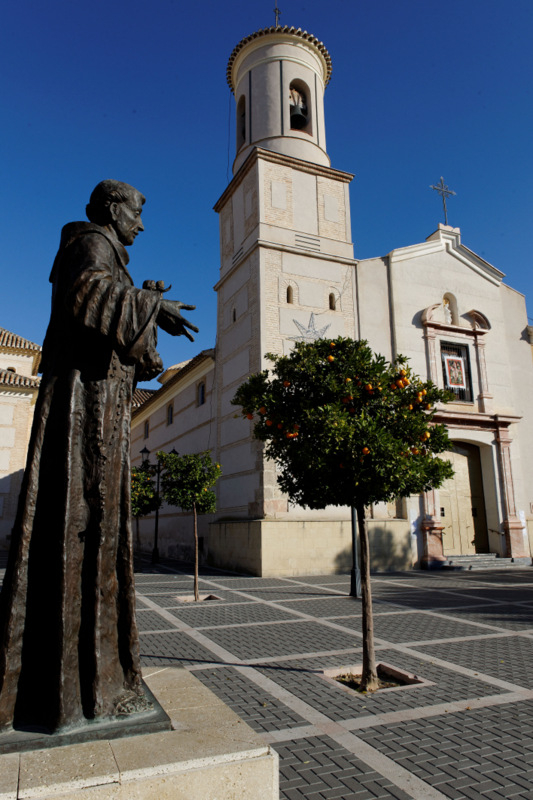 The most noteworthy feature of the convent building is the baroque cloister, which is the central area for all the other areas of the convent.
The most noteworthy feature of the convent building is the baroque cloister, which is the central area for all the other areas of the convent.
In 1812 part of the buildings were destroyed during The Peninsular Wars, Napoleonic troops sacking Cehegín on their way through to Portugal, and at this point the inhabitants of the building were expelled when much of the convent was set on fire.
Between 1820 and 1823. The inhabitants returned, albeit in much smaller numbers, but in 1837 disentailment laws threatened the future of the convent. However, a reduced number of Franciscans maintained the convent until its official reopening in 1878.
The convent again suffered significant damage during the Civil War.
Following the Civil War the façade was completely restored In the 1940s, and in 1999 another refit was performed using veined marble from Pena Rubia. The tower was cleaned, and returned to its original state, and this is how we can see the building today.
Brief history of the Virgen de las Maravillas
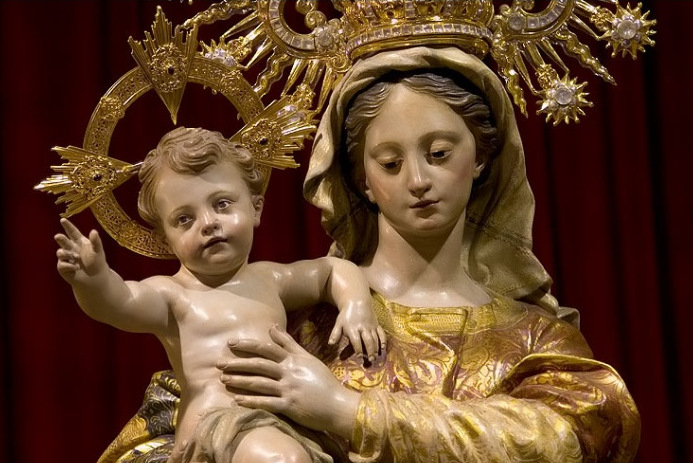 The history of the Virgen de las Maravillas of Cehegín goes back to the year1721 , when the Franciscan friar Francisco Moreno Pastor expressed his desire to find a worthy image of cult for the town.
The history of the Virgen de las Maravillas of Cehegín goes back to the year1721 , when the Franciscan friar Francisco Moreno Pastor expressed his desire to find a worthy image of cult for the town.
Don Pedro Antonio Pereti, a native of the town, who had the economic means to help the friar in his quest, charged his brother Lorenzo Pereti, captain of a merchant ship, to commission a sculpture in Naples, the resulting work completed by the sculptor Nicolas Fumo, who made the image of the virgin with the infant in her arms
.
It took four years for the image to be completed, and it arrived via Cartagena on 16 July in 1725, following a difficult voyage in which much of the cargo on board ship had been lost in a terrible storm. The virgin had survived the journey intact, following which she received the name the virgin of miracles, the Virgen de las Maravillas.
Following a journey across land, she arrived in the convent on 25 July, and since that day has been venerated on the same day of the year.
At the time of her arrival Cehegín already had a patron saint, San Zenón. It is probable that the Templars bought this cult with them during the Middle Ages when they owned the town.
As the town now had an extremely important image, the fiestas in honour of the virgin took place alongside those of San Zenón, so on 9 September San Zenón was honoured and the virgin on the 10th .
The cult of the virgin expanded rapidly and on 27 October 1730 her Camarín (the decorated niche in which the image is displayed) was inaugurated, and in 1734, the Virgin and Child were both given silver crowns.
It didnt take long for her to become the co-patron, along with San Zenón, and towards the end of the 19th-century the Virgin became the sole patron of the town .
She was officially acclaimed patron of the town of Cehegín in 1927.
The Virgin gained her name of the Virgen de las Maravillas during her original journey from Italy, but has since escaped certain destruction on three occasions.
The first of these occurred during the War Of Independence, or Peninsular War, when the church was sacked by Napoleonic troops in 1812. On that occasion, the image was removed and hidden inside an old chest in a rural finca called La Jabalina, where she remained hidden amongst bushes alongside a waterway for 7 days.
The next within 1837 when disentailment laws threatened the future of the convent, and the town hall had to intervene to save her .
Then the third occasion was during the Spanish Civil War when many sculptures were burnt and churches destroyed across the region. The Virgin was transferred to Murcia, where she was catalogued as a piece of incalculable value and stored in the provincial fine arts Museum. She was returned to Cehegín on 7 May in 1939 .
The Fiestas Patronales in her honour are held on 10 September and take place between the 8th and 14th of the month .
Hours of Service:
Summer Hours:
From Monday to Saturday at 8,30 and at 8pm.
Sunday 9, 11, 12 Midday and at 8pm
Winter Hours:
Monday to Saturday at 8.30am and 7pm
Sundays at 9, 11, 12 and 7pm
Where is the Convento de san Esteban, Cehegín ?
The Convento is out of the main old quarter of Cehegín , in the area behind the main shopping High Street in Calle del Convento
Click for map, Calle del Convento, Cehegín.
Click for details of services in all Cehegín churches.
For full information about Cehegín, go to the dedicated Cehegín section, Click Cehegín.
article_detail
Contact Murcia Today: Editorial 000 000 000 /
Office 000 000 000



